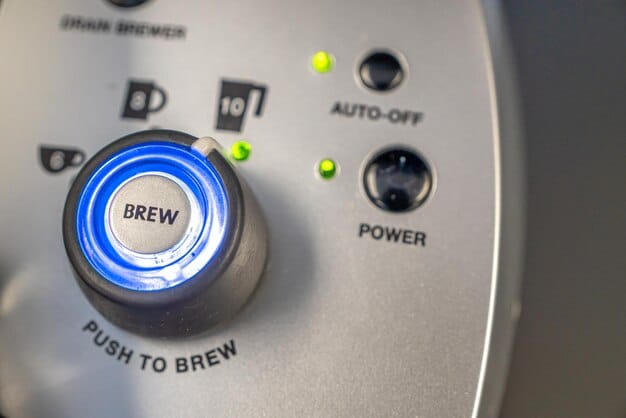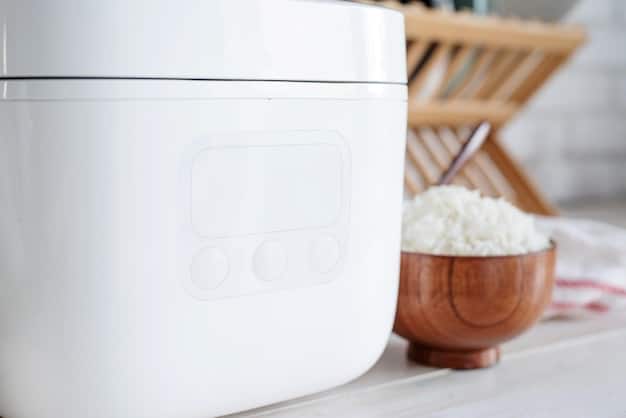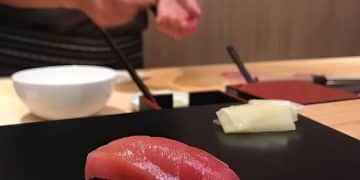US Buyer’s Guide: Avoid Voltage Issues with Japanese Electronics

Navigating the electrical differences between the US and Japan is crucial for American consumers importing Japanese electronics. This guide provides essential information on understanding voltage, power converters, and adapter types to ensure safe and functional operation of your devices, preventing damage and maximizing their lifespan.
Diving into the world of Japanese electronics can be incredibly exciting, offering unique gadgets, audio equipment, and appliances often unavailable elsewhere. However, for buyers in the United States, a critical hurdle often overlooked is the significant difference in electrical voltage. Ignoring this can lead to damaged devices, safety hazards, and a frustrating experience. This comprehensive guide, “Don’t Get Stuck with Voltage Issues: A US Buyer’s Guide to Japanese Electronics,” aims to equip you with the knowledge needed to confidently purchase and safely use your Japanese electronics, ensuring a seamless integration into your US home.
Understanding the Voltage Divide: Japan vs. US
The fundamental difference between Japanese and US electrical systems lies in their standard voltage. Japan operates predominantly on 100 volts (V), while the United States uses 120 volts (V). While this might seem like a small difference, it’s significant enough to cause problems if not properly addressed. Many assume a 20-volt gap is negligible, but electronics are designed for precise specifications, and exceeding them can have serious consequences.
The Core Difference in Power Standards
When you plug a Japanese 100V device into a US 120V outlet directly, you are essentially supplying it with 20% more voltage than it was designed to handle. This excess voltage can lead to overheating, component degradation, and ultimately, device failure. It’s akin to overfilling a balloon; eventually, it will burst or at least degrade much faster than intended. This is not just about functionality; it’s also about safety, as overheating can pose fire risks.
- Japan: Primarily 100V, with two different frequencies (50Hz in East Japan, 60Hz in West Japan).
- United States: Primarily 120V, with a uniform frequency of 60Hz.
The frequency difference (Hertz or Hz) is usually less of a concern for most modern electronics, as many are designed to operate across a range of frequencies (50/60Hz). However, for devices with motors or timing mechanisms, like older turntables or clocks, frequency differences can impact performance. The voltage, however, is almost always a critical factor requiring attention for safety and longevity.
Why the Discrepancy Matters
Understanding the “why” behind the voltage discrepancy is crucial for recognizing the importance of mitigation. Historically, Japan’s adoption of electricity was influenced by different Western powers, leading to its unique 100V standard. The US, on the other hand, standardized on 120V early on. These historical choices have profound implications for today’s global consumer market. It means that while the world is increasingly interconnected, electrical standards remain diverse, necessitating careful consideration for international purchases. Without proper conversion, the lifespan of your prized Japanese electronics will be drastically reduced, often failing within weeks or months rather than years.
Ultimately, a clear grasp of these voltage distinctions empowers you to make informed decisions before purchasing and plugging in, safeguarding both your investment and your home. Overlooking this fundamental difference is a common pitfall for many eager buyers, and one that is easily avoidable with the right preparation.
Navigating Power Converters and Transformers
Once you understand the voltage discrepancy, the next step is finding the right solution. Power converters and transformers are your primary tools for bridging this electrical gap. Though often used interchangeably in casual conversation, these devices serve distinct purposes, and choosing the wrong one can be as detrimental as using no converter at all.
Step-Down Transformers: Your Best Friend for Japanese Electronics
For most Japanese electronics, you will need a step-down transformer. A step-down transformer reduces the US 120V supply to the 100V required by Japanese devices. These are passive devices that primarily adjust voltage, and they are generally the safest and most reliable option for sensitive electronics. It’s crucial to select a transformer with an appropriate wattage rating for your device.
- Voltage Conversion: Reduces 120V to 100V.
- Wattage Matching: Always choose a transformer with a wattage capacity significantly higher than the device you plan to power. For example, if your Japanese device uses 500W, opt for a 750W or 1000W transformer to allow for spikes and ensure longevity. Running a transformer at its maximum capacity continuously can lead to overheating and reduced efficiency.
- Types of Transformers: Toroidal transformers are often preferred for sensitive audio equipment due to their lower noise and higher efficiency.

When to Avoid Step-Up/Step-Down Converters (Switch-Mode)
While often smaller and lighter, many “travel converters” are switch-mode power supplies designed for short-term use with basic electronics like hair dryers or charging phones. These are typically not suitable for long-term use with sensitive or high-power Japanese electronics. They convert voltage differently, often chopping the AC waveform, which can introduce noise or damage to delicate circuits over time. Always prioritize a dedicated step-down transformer for any significant or permanent Japanese electronic purchase. Converters advertised for “travel” often lack the continuous power rating needed for home appliances and intricate devices, and their internal electronics are usually not as robust as those in a quality transformer.
It’s important to read the labels carefully. If a device lists “Input: 100-240V” or “100-120V,” it likely has a universal power supply and can handle US voltage directly without a transformer. However, this is rare for dedicated Japanese market appliances. When in doubt, assume a transformer is needed. Investing in a good quality transformer is far less expensive than replacing a damaged electronic device.
The rule of thumb for selecting a transformer is straightforward: identify the wattage of your Japanese electronic device (usually listed on the product label or in its manual) and then purchase a transformer that can handle at least 150% of that wattage. This provides a safety margin for peaks in power consumption and contributes to the transformer’s own longevity. Neglecting this crucial step is a common error that can render your Japanese import unusable or dangerous.
Beyond Voltage: Plugs, Adapters, and Safety
While voltage largely dominates the conversation, understanding the physical plugs and safety considerations is equally vital for a seamless and secure experience with your Japanese electronics in the US. The immediate concern is whether your Japanese plug will physically fit into a US outlet.
Japanese and US Plug Types: A Familiar Yet Tricky Landscape
Both Japan and the United States primarily use Type A and Type B plugs. Type A plugs have two flat parallel pins (unpolarized or occasionally polarized with one pin wider than the other), and Type B adds a round grounding pin. On the surface, they look very similar, and a Japanese Type A plug will usually fit into a US Type A or Type B outlet. This leads many US buyers to mistakenly believe no adapter or converter is needed, which is a dangerous assumption.
- Physical Compatibility ≠ Electrical Compatibility: Just because a plug fits into an outlet does not mean the voltage is correct. This is the most critical point to remember. Physically inserting a Japanese 100V plug into a US 120V outlet without a step-down transformer will supply too much voltage, leading to potential damage.
- Using Plug Adapters: If your Japanese device has a two-pronged (Type A) unpolarized plug, it will likely fit directly into a US outlet. If it’s a polarized Type A (one wider prong) or a Type B (three prongs with a ground), you might need a simple plug adapter to physically fit it into some older US outlets, especially if they are unpolarized. However, note that a plug adapter only changes the physical shape; it does NOT convert voltage. It only solves the issue of the plug not fitting, not the voltage mismatch.
- Grounding: Many Japanese appliances, especially larger ones, come with a three-prong plug for grounding (Type B). While US outlets often have three prongs, ensuring proper grounding is important for safety. If your Japanese device requires a grounded connection, ensure your transformer also provides a grounded output, and your US outlet is grounded.
Essential Safety Precautions
Safety should be paramount when dealing with electrical conversions. Overlooking crucial safety measures can lead to electrical fires, shocks, and damage to your property. A responsible approach involves more than just buying a transformer; it includes vigilance and regular checks.
- Always Check Wattage: As mentioned, ensure your transformer’s wattage capacity exceeds the device’s need by at least 50%. Insufficient wattage can cause the transformer to overheat, potentially leading to fires. Never overload your transformer.
- Monitor for Overheating: After plugging in your Japanese device through a transformer for the first time, check both the device and the transformer periodically for excessive heat. Some warmth is normal, but if either feels hot to the touch, unplug immediately and reassess your setup.
- Ventilation: Ensure both the electronic device and the transformer have adequate ventilation. Do not place them in enclosed spaces or cover their vents, as this can lead to heat buildup.
- Quality Matters: Purchase transformers from reputable brands and suppliers. Cheap, uncertified transformers might not provide stable voltage or adequate safety features. Look for certification marks like UL (Underwriters Laboratories) or CE (Conformité Européenne), though UL is more relevant for US standards.
- Read the Manuals: Always consult the user manual for both your Japanese electronic device and your step-down transformer. They contain critical information regarding power requirements, usage guidelines, and safety warnings. Some devices might have specific power-up sequences or require certain types of transformers.
Ignoring these safety measures is a gamble that could cost you much more than the price of a good quality transformer. Investing in correct power solutions and exercising caution will ensure your enjoyment of Japanese electronics isn’t cut short by preventable electrical issues.
Case Studies: Common Japanese Electronics and Their Power Needs
Understanding general principles is essential, but applying them to specific electronics helps demystify the process. Different types of Japanese electronics have varying power requirements and sensitivities, necessitating tailored approaches to voltage conversion.
Audio Equipment (Amplifiers, Receivers, Turntables)
Japanese audio equipment, especially vintage amplifiers and receivers, is highly sought after by audiophiles worldwide for its unique sound profiles and build quality. However, these devices are notoriously sensitive to voltage discrepancies. Even a slight over-voltage can impact sound quality, component lifespan, and overall performance.
- Precision Voltage: Audio equipment generally requires a stable and precise voltage supply. Using a cheap or unregulated converter can introduce hums, noise, or even damage delicate internal components.
- Toroidal Transformers: For high-end audio gear, consider a high-quality toroidal step-down transformer. These are known for their efficiency, silent operation, and clean power output, which is crucial for preserving sound fidelity.
- Wattage Consideration: Amplifiers, in particular, can draw significant power, especially at higher volumes. Always oversize your transformer to accommodate peak power draws. A 100-watt amplifier might need a 200-300 watt transformer to safely handle dynamic musical passages.
It’s worth noting that some turntable motors are sensitive to variations in frequency (Hz). While most US converters don’t change frequency, if you have a very old or specific direct-drive Japanese turntable, research its frequency dependence before purchase. However, for most modern audio, the voltage is the primary concern.
Kitchen Appliances (Rice Cookers, Toasters, Blenders)
Japanese kitchen appliances are famous for their innovation, reliability, and precision, particularly rice cookers. These are often high-wattage devices designed for specific heating elements and motors.
- High Wattage: Many kitchen appliances, such as induction rice cookers, electric kettles, and toaster ovens, draw a considerable amount of power. They often range from 800W to 1500W or even higher. This means you’ll need a robust step-down transformer with a high wattage rating, often 2000W or more.
- Resistive Loads: Appliances that primarily generate heat (like rice cookers) are generally less sensitive to minor voltage fluctuations compared to delicate electronics, but they still require the correct 100V to operate optimally and safely. Supplying 120V will cause them to overheat and fail prematurely.
- Continuous Use: Since many kitchen appliances are used frequently and sometimes for extended periods (e.g., keeping rice warm for hours), the transformer must be capable of continuous, stable operation at the required wattage.
Always double-check the wattage of your appliance before purchasing a transformer. An undersized transformer can be a significant fire hazard and will quickly burn out. For a high-wattage device, expect to invest in a proportionally large and heavy transformer.

Video Game Consoles and Chargers
Many classic and obscure Japanese video game consoles are popular imports. Thankfully, most modern consumer electronics, including current-generation video game consoles and their chargers, are often “universal voltage,” meaning they can handle 100V to 240V. This is because manufacturers design them for a global market to simplify production and distribution.
- Check the Power Adapter: Always look at the power adapter or the device itself for “INPUT:” specifications. If it says “100-240V, 50/60Hz,” then it is universal voltage and generally requires only a simple physical plug adapter (if needed), not a voltage transformer.
- Older Consoles: Older consoles, however, are rarely universal voltage. For a Super Famicom, Nintendo 64, or Sega Saturn from Japan, you will almost certainly need a step-down transformer for the console’s power supply. Some older consoles might use external power bricks, which can often be replaced with a compatible US-version power brick, simplifying the voltage issue entirely.
The key takeaway for any electronic device is to always, always check the listed input voltage on the device or its power supply. This simple step can save you considerable time, money, and potential damage, clarifying instantly whether you need a transformer or just a physical plug adapter.
Purchasing Tips: Where to Buy and What to Look For
Acquiring Japanese electronics can be an exciting venture, but the purchasing process, especially when considering voltage, requires careful attention. Knowing where to buy and what specific features to look for will significantly impact your success and safety.
Reputable Sources for Japanese Electronics
When buying directly from Japan, whether online or in person, prioritize sellers known for transparency regarding product specifications. Established platforms and specialized importers are often your safest bet.
- Online Japanese Retailers (e.g., Amazon Japan, Rakuten, Yahoo Auctions Japan): These platforms offer a vast selection but require extra diligence. Double-check product descriptions for voltage information (often listed as “電源” – den-gen for power supply, and “電圧” – den-atsu for voltage). Many sellers ship internationally, but it’s your responsibility to ensure power compatibility.
- Specialized Importers/Resellers: Some US-based shops specialize in importing Japanese electronics. They often pre-check for voltage compatibility or even offer models pre-modified for US voltage. While potentially more expensive, they can provide peace of mind and often customer support in English.
- Direct Manufacturer Websites (Japan): For new products, checking the official Japanese manufacturer website will provide definitive technical specifications, including power requirements. This is invaluable for confirming voltage before committing to a purchase.
Beware of sellers who do not explicitly state voltage or power consumption details. If information is missing, do not assume universal compatibility. Always send a message to the seller to confirm the voltage requirements of the device before making a purchase. A hesitant or vague response should be a red flag.
Choosing the Right Step-Down Transformer: Key Considerations
The transformer acquisition is as critical as the electronic device itself. A good transformer ensures long-term safety and performance.
- Trusted Brands: Look for brands with a track record of producing reliable voltage transformers. Examples include Nissyo, K. A. V., and brands specifically designed for international use. Read reviews from other US buyers who have used them for Japanese electronics.
- Safety Certifications: Prioritize transformers that carry safety certifications relevant to your region, such as UL Listing in the US. These certifications indicate that the product has been tested to meet specific safety standards, reducing the risk of electrical hazards.
- Continuous vs. Peak Wattage: Transformers often list a “peak” and “continuous” wattage rating. Always size your transformer based on the “continuous” wattage, which is the power it can safely supply for extended periods. The “peak” rating is for very short bursts of power, not sustained use. For most appliances that run for more than a few minutes, the continuous rating is the one to heed.
- Noise and Heat: Higher quality transformers, particularly toroidal types for audio, tend to generate less hum and heat. While a certain level of warmth is normal during operation, excessive noise or heat points to a potentially undersized or low-quality unit.
- Input/Output Options: Ensure the transformer has the correct input (US 120V) and output (Japan 100V) voltage. Some transformers offer multiple output voltages; confirm it has a dedicated 100V output. Also, check for the correct outlet type on the transformer itself to accommodate your Japanese plug.
Do not cut corners on a transformer. A cheap, undersized, or uncertified transformer is a false economy that can lead to costly damage or safety risks. Consider it an essential accessory that protects your investment in Japanese electronics.
Long-Term Care and Maintenance for Converted Setups
Acquiring the correct electronic devices and voltage converters is just the beginning. Long-term care and maintenance of your converted setup are crucial for ensuring the longevity of your Japanese electronics and maintaining a safe operating environment. Neglecting these aspects can lead to premature failure or even hazardous situations.
Optimizing Performance and Lifespan
Proper operation and environmental conditions play a significant role in how well your electronics and their converters perform over time. Think of it as a symbiotic relationship where each component’s well-being affects the other.
- Adequate Ventilation: Both the electronic device and the step-down transformer generate heat. Ensure they are placed in well-ventilated areas, away from direct sunlight, heating vents, or enclosed cabinets. Overheating can significantly reduce component lifespan and efficiency for both.
- Dust Control: Dust accumulation can impede cooling, potentially leading to overheating. Regularly clean vents and surfaces of both the device and the transformer. Use compressed air to carefully clear internal dust if you are comfortable doing so or seek professional cleaning for complex electronics.
- Stable Power Source: Plug your transformer into a stable wall outlet, preferably one not overloaded with other high-power devices. Avoid using long extension cords or power strips that could introduce voltage drops or noise, especially for sensitive audio equipment. Surge protectors are advisable for the wall outlet where the transformer is plugged in, providing an extra layer of protection against power spikes.
Continuous monitoring of the transformer for unusual humming noises or excessive heat during operation can preempt many problems. A well-maintained setup is a reliable setup, providing years of enjoyment from your Japanese imports.
Troubleshooting Common Issues
Even with the best preparation, issues can sometimes arise. Knowing how to troubleshoot basic problems can save you frustration and costly repairs.
- Device Not Powering On:
- Check the transformer: Is it plugged in? Is its power switch on? Is the output voltage stable (if your transformer has a display)?
- Check the device’s original power cord: Is it securely connected to the transformer’s output and the device?
- Is the transformer correctly rated for wattage? An undersized transformer might fail to power a device properly, especially at startup (inrush current).
- Overheating/Burning Smell:
- IMMEDIATELY UNPLUG EVERYTHING. This is a critical safety hazard.
- The transformer is likely undersized for the device’s wattage, or there’s an internal fault in either the transformer or the device. Do not re-plug until the issue is identified and resolved.
- Re-check device wattage against transformer continuous rating.
- Humming/Buzzing from Audio Equipment:
- This could indicate a grounding issue or an unclean power supply from the transformer.
- Consider a higher quality, typically toroidal, transformer if using sensitive audio gear.
- Ensure proper grounding if both your device and outlet support it.
When troubleshooting, always isolate the problem. Test components one by one if possible. If an issue persists or you’re unsure, consulting a qualified electrician or electronics repair specialist is highly recommended. Never attempt to force a device that seems to be struggling under incorrect voltage; the consequences can range from minor damage to a complete meltdown.
The Future of Cross-Border Electronics: Trends and Innovations
The landscape of international electronics is continuously evolving, with trends and innovations shaping how we interact with devices from different regions. Understanding these ongoing developments can help US buyers anticipate future needs and opportunities when considering Japanese electronics.
Global Standardization and Universal Power Supplies
One of the most significant trends is the increasing adoption of universal power supplies in modern electronics. Many manufacturers, keen to reduce production costs and simplify distribution, are designing devices that can operate across a wide range of voltages (e.g., 100-240V). This trend is particularly evident in laptops, smartphones, tablets, cameras, and even some new audio-visual equipment.
- Reduced Need for Transformers: As more devices become universal voltage compatible, the reliance on bulky and heavy step-down transformers diminishes. This is a considerable convenience for consumers who no longer need to worry about voltage conversion for these specific products.
- Manufacturer Design Choices: While universal power supplies are common in portable electronics, high-power appliances (like induction cooktops, heavy-duty blenders, or industrial machinery) are less likely to integrate them due to cost, heat dissipation, and practical design constraints. So, for those types of goods, dedicated voltage conversion will likely remain necessary.
Always checking the “INPUT” specifications on any new Japanese electronic device is still the golden rule. Even if the trend is towards universal voltage, exceptions exist, and confirmation is always superior to assumption.
Smart Converters and Advanced Power Solutions
Innovation in power conversion technology is also making devices smarter and more efficient. While traditional step-down transformers remain robust, newer solutions are emerging.
- Digital Voltage Stabilizers: Some advanced converters offer not just voltage conversion but also voltage stabilization, protecting sensitive electronics from fluctuations in power supply. These can be particularly beneficial in areas with unstable grid voltage.
- Compact and Efficient Designs: Manufacturers are continuously seeking ways to make transformers lighter and more compact without compromising safety or efficiency. Advances in materials and design can lead to smaller footprints for the same power capacity.
- Integrated Solutions: In some niche markets, manufacturers might offer Japanese products specifically “modified for export” or with external power bricks that are already designed for 120V US outlets. While not widespread for all product categories, it’s a growing consideration for some companies.
For US buyers passionate about Japanese electronics, staying informed about these trends can lead to better purchasing decisions and a more streamlined experience. The aim is always to achieve perfect electrical harmony between your home’s grid and your prized imports, ensuring they perform as intended and last for years to come. Adapting to these changes makes the entire process of global shopping more accessible and less daunting, empowering consumers to enjoy the best of Japanese innovation without the common voltage headaches.
| Key Point | Brief Description |
|---|---|
| 🇯🇵 vs. 🇺🇸 Voltage | Japan uses 100V, US uses 120V. Direct plugging can damage electronics. |
| ⚡ Step-Down Transformer | Essential to convert 120V (US) to 100V (Japan). Match wattage carefully. |
| 🔌 Plug Compatibility | Japanese plugs usually fit US outlets, but this does NOT mean voltage is correct. |
| ⚠️ Safety First | Ensure proper wattage, ventilation, and quality converters to prevent hazards. |
Frequently Asked Questions About Japanese Electronics Voltage
Japanese electronics are designed for 100V, while US outlets supply 120V. Plugging a 100V device into a 120V outlet provides 20% more voltage than it can handle. This excess voltage can cause the device to overheat, internal components to degrade rapidly, and ultimately, lead to premature failure or even fire hazards due to electrical stress and overheating.
A step-down transformer precisely reduces voltage (e.g., 120V to 100V) and is suitable for continuous use with sensitive or high-power electronics. Travel converters, often lighter and smaller, use a different technology (switch-mode) and are generally for short-term use with basic resistive loads like hair dryers, not for long-term power conversion for delicate or complex Japanese devices.
First, find the wattage (W) consumption of your Japanese electronic device, usually listed on its label or in the manual. Then, choose a step-down transformer with a continuous wattage rating that is at least 1.5 to 2 times higher than your device’s wattage. This provides a safety margin for power surges and extends the life of both your device and the transformer by preventing overload.
Yes, many modern electronic devices, particularly those designed for global markets like laptops, camera chargers, and some current-generation game consoles, feature “universal voltage” power supplies. These devices will specify an input range of “100-240V” on their power adapters. If you see this range, you typically only need a physical plug adapter, not a voltage transformer, for use in the US.
Always ensure your converter’s wattage matches or exceeds the device’s requirement. Provide adequate ventilation for both the converter and the electronic device to prevent overheating. Purchase reputable brands with safety certifications. Regularly check for signs of overheating or unusual noises. Never use damaged cords or converters, and always consult and follow the user manuals for both your appliance and converter.
Conclusion
Navigating the world of imported Japanese electronics as a US buyer doesn’t have to be fraught with electrical concerns. By understanding the fundamental voltage differences between Japan’s 100V and the US’s 120V, and by investing in the appropriate step-down transformer, you can safely and effectively integrate these unique and often superior devices into your daily life. Remember that physical plug compatibility does not equate to electrical compatibility, and that safety considerations, including proper wattage matching and ventilation, are paramount. With careful planning and the right tools, you can enjoy the innovation and quality of Japanese electronics without getting stuck with voltage issues, ensuring your cherished items function perfectly for years to come.





